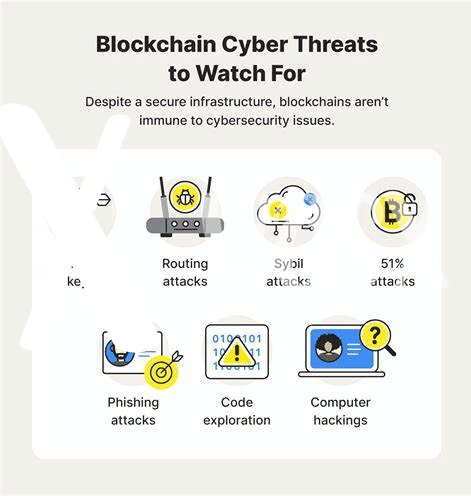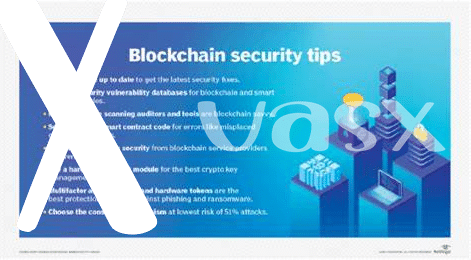Trust Begins with Transparency 🌐

In the world of blockchain, the secret ingredient to building trust isn’t hidden in complex codes or advanced algorithms; it’s in being open about how things work. 🌟 Imagine walking into a room with clear glass walls, where everything happening inside is visible from the outside. That’s what transparency in blockchain is like. It allows everyone to see how transactions are made, how data is stored, and how decisions are taken. This visibility builds a foundation of trust because it leaves no room for secrets that could lead to misuse or fraud.
| Aspect of Blockchain | Importance of Transparency |
|———————-|—————————–|
| Smart Contracts | Ensures their fairness and adherence to agreed-upon rules |
| Transactions | Allows for the verification of transaction integrity and legitimacy |
| Governance | Facilitates community engagement by making decision-making processes open |
In essence, transparency acts like sunshine 🌞 – the best disinfectant. It empowers participants by giving them all the information they need to make informed decisions. When people understand how a system works and can see it in action, they are more likely to trust and support it. This is especially important in the blockchain ecosystem, where collaboration and consensus are key. Building a transparent system isn’t just about technology; it’s about creating an environment where everyone feels included, informed, and secure.
Education: the Key to Empowerment 📚
Learning is power, especially in the world of blockchain. Imagine blockchain as a giant Lego set. Just like how each piece needs to fit perfectly to build something great, every person involved with blockchain plays a crucial part in its security and success. But to play their part well, they first need to understand what they’re building. This is where education comes in. It’s not just about learning how to code or invest; it’s about understanding the ‘why’ and the ‘how’ behind the blockchain. This knowledge empowers everyone to make smarter decisions, spot potential problems, and contribute positively to the blockchain’s growth.
Moreover, as the community becomes more knowledgeable, they become more resilient against risks. Think of it like a team sport where every player knows not just their role, but also the strategies of the game. This collective wisdom is crucial for defending against the tricks and traps of cyber villains. By promoting learning and awareness, we’re not just strengthening individual understanding, but we’re fortifying the entire blockchain community. And for those looking to deepen their investment strategies in the blockchain space, a great resource is https://wikicrypto.news/long-term-bitcoin-holding-strategies-for-maximum-roi. This guide not only extends your learning curve but also empowers you to navigate the complexities of blockchain investments with confidence.
The Ripple Effect of Human Errors 🔄

Imagine you’re playing a game of dominoes, where each piece’s fall affects the next one in line. Now, relate this to the digital world of blockchain, where each action or mistake by a person can trigger a series of unexpected consequences. Just one small error, like sharing a password or clicking on a suspicious link, can open the door for intruders to sneak in, affecting not just one but many. This chain reaction doesn’t just stop at one’s digital doorstep; it ripples through the entire blockchain network, challenging its integrity and the trust of its users. 🔄💻🔐 It highlights why being cautious and double-checking our digital actions is paramount. Such vigilance not only protects us but also guards the intricate web of connections we’re a part of, reinforcing the strength and safety of the communal digital fortress we rely on every day.
Cultivating a Culture of Security Awareness 🛡️

Creating a space where everyone feels responsible for keeping things safe is like building a strong fence around our digital neighborhood. When everyone from the top bosses to the newest members understands the importance of their actions, it’s like having a community watch that keeps an eye out for anything unusual. This teamwork doesn’t just happen overnight. It needs regular chats, workshops, and sharing stories that remind us all how a simple mistake can open the door to trouble. Think of it like learning to drive a car. At first, it’s all about following the rules, but with time, being safe on the road becomes a part of who we are.
To really understand the importance of being cautious, it helps to know the ins and outs of how blockchain technology can make our digital world a better place. Take a peek at bitcoin and payment channels investment strategies for a dive into smart investing that also keeps your digital treasures safe. By turning learning into a habit, we create an environment where questioning and curiosity are welcomed. This kind of atmosphere not only helps us sidestep potential problems but also fortifies our community against those who might try to trick us with fancy talk or pressure. 🛡️🔍💡
The Unseen Battle: Psychological Manipulations 👁️
In the world of blockchain, not all battles are fought with lines of code. Some are more subtle, playing out in the minds of individuals. Just as a magician uses sleight of hand, hackers and scammers use psychological tricks to gain access to digital treasures. They craft messages that look real but are baits, designed to prey on trust and curiosity. These manipulations can lead anyone down a dangerous path without them realizing until it’s too late. It’s a game of mental chess where the stakes are high, and the only defense is constant vigilance and questioning. Recognizing these tactics is more than half the battle; it empowers individuals to stop attackers in their tracks, safeguarding not just their assets but the integrity of the entire blockchain community. 🧠💡🔍
| Psychological Manipulation Tactic | How It Works | How to Counter |
|---|---|---|
| Phishing | Scammers send fake messages to trick you into revealing sensitive information. | Verify the source’s authenticity before responding or clicking on any links. |
| Social Engineering | Using human interaction to obtain or compromise information about an organization or its computer systems. | Be skeptical of unsolicited help offers and too-good-to-be-true requests. |
| Pretexting | Creating a fabricated scenario to steal your personal information. | Always validate the identity of the person asking for information. |
Collaborative Efforts in Securing the Blockchain Community 👫

In the vast and ever-evolving world of blockchain, the strength of our digital security doesn’t just lie in complex codes and innovative technology. It’s also in the power of community and collaboration. Think of it as a neighborhood watch program, but for the digital realm. When individuals and organizations come together, sharing knowledge and resources, they create a fortified barrier against threats. It’s a bit like building a human chain around our digital assets. This united front is critical, not just for defending against potential breaches but also in fostering an environment where everyone, from tech wizards to everyday users, plays a vital role in the ecosystem’s safety.
Moreover, within this collaborative spirit lies the opportunity for everyone to learn and grow. By pooling our experiences and insights, we can outsmart the constantly evolving tactics of hackers and digital tricksters. It’s a bit like piecing together a giant puzzle; everyone has a piece that can help complete the picture. Through platforms and forums dedicated to blockchain security, we create a wellspring of knowledge that’s accessible to all, ensuring we’re all better protected and informed. It’s important to remember that in the digital age, knowledge is as valuable as currency. So, diving into resources such as bitcoin and nfts investment strategies not only broadens our understanding of digital assets but also reinforces the communal defense against the cyber threats of tomorrow.
